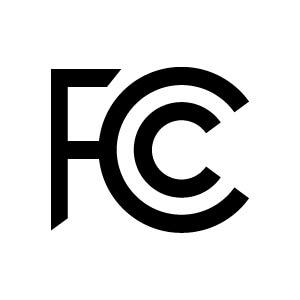FCC’s ATSC 3.0 Order Takes Long-Awaited Steps to Facilitate Multicast Hosting Arrangements
June 30, 2023


Pillsbury Winthrop Shaw Pittman LLP
Last Friday (6/23), the FCC released a Third Report and Order and Fourth Further Notice of Proposed Rulemaking (Multicast Licensing Order), setting forth rules regarding Next Gen multicast hosting arrangements and seeking further comment on ATSC 3.0-related patent issues.
Broadcasters providing or contemplating ATSC 3.0 services are likely well aware of how complex the process of finding suitable “host” stations can be. Not only does a Next Gen broadcaster need to locate a host station for its FCC-mandated primary stream simulcast, but many also strive to find host stations for their multicast streams to ensure that all of their pre-transition programming can continue to be received by ATSC 1.0 viewers for free over the air.
Having taken the position that the ATSC 3.0 licensing rules originally adopted in 2017 apply only to a station’s primary stream, the FCC developed what many hoped would be a temporary authorization process for multicast hosting arrangements. Under this process, broadcasters could request special temporary authority (STA) for their multicast stream hosting arrangements to assure participating stations that regulatory liability for a guest stream would remain with the originating station, rather than with the host. Unlike a license, however, STAs need to be renewed every six months, and questions remained with respect to what standards would or should apply to the growing variety of hosting arrangements.
Seeking clarity, the National Association of Broadcasters filed a Petition for Declaratory Ruling and Petition for Rulemaking (Petition) in November 2020 asking the FCC to, among other things, extend the licensing regime for primary stream simulcasts to certain multicast hosting arrangements. The FCC responded by issuing a Further Notice of Proposed Rulemaking (Multicast Licensing FNPRM) in 2021, on which comments were solicited in February and March 2022.
The Multicast Licensing Order in large part adopts the proposals set forth in the Multicast Licensing FNPRM. Specifically, the FCC:
- Adopted the proposal to allow Next Gen TV stations to license one or more simulcast multicast streams on a host station or stations, whether that guest stream is a 1.0 or 3.0 simulcast.
- Adopted the proposal to allow Next Gen TV stations to license one or more non-simulcast multicast streams on a 1.0 host station or stations.
- Declined to consider licensing of non-simulcast multicast streams on a 3.0 host station or stations.
- Declined to license “lateral” hosting arrangements (e.g., where a station operating in ATSC 1.0 and serving as a host for an ATSC 3.0 station seeks to have one of its own multicast streams hosted on another 1.0 station to make room for the 3.0 station’s guest stream).
In addition to adopting new rules for multicast stream licensing, the Multicast Licensing Order (1) extended the sunset dates of the “substantially similar” rule for licensed simulcast streams and the requirement to comply with the ATSC A/322 standard on primary 3.0 streams; and (2) sought further comment on the marketplace for ATSC 3.0 Standard Essential Patents and the impact on consumers of potential “reasonable and non-discriminatory” licensing requirements.
Many may be disappointed to see that the FCC elected to extend the licensing standards applicable to mandatory primary stream simulcasts to voluntary multicast stream hosting arrangements. That is, a station seeking to license a multicast hosting arrangement will need to demonstrate that the proposed host is assigned to the same DMA as the originating station and covers the guest station’s entire community of license. Several broadcast industry commenters warned that such coverage requirements could undermine, rather than promote, the Commission’s goal of preserving programming for ATSC 1.0 viewers because the inability to find a 1.0 host that satisfies these requirements could force Next Gen broadcasters to drop multicast streams entirely (e.g., due concerns and limitations associated with proceeding without a license on a purely contractual basis).
The FCC also adopted a new “host-capacity limit” in response to comments received during the rulemaking proceeding. A Next Gen station seeking to license non-simulcast multicast hosting arrangements will now need to demonstrate that it will not be using more capacity on host stations, in the aggregate, than the station would be able to use if it were still operating entirely on its own facility in ATSC 1.0. This demonstration (among others) must be made in an exhibit accompanying the Next Gen station’s license application, and the exhibit will also need to be posted to the station’s website (or online public inspection file if it does not have a website).
But overall, the Multicast Licensing Order appears to be a positive step toward eliminating some of the bureaucratic obstacles inhibiting ATSC 3.0 hosting arrangements and the growth of ATSC 3.0 itself. At a minimum, it removes the burden of having to remember (and pay for) STA extensions every 6 months, which wasted both the FCC’s and the broadcaster’s resources. The next step for many NextGen broadcasters will be to modify their existing NextGen licenses to incorporate their multicast stream hosting arrangements. For stations falling into this category (or preparing to transition to ATSC 3.0), we strongly encourage involving FCC counsel knowledgeable on ATSC 3.0 matters. There’s a lot packed in the FCC’s 73-page order, and understanding the FCC’s expectations and broadcasters’ obligations in this area can help to avoid pitfalls and unnecessary delays on the path to Next Gen TV.
